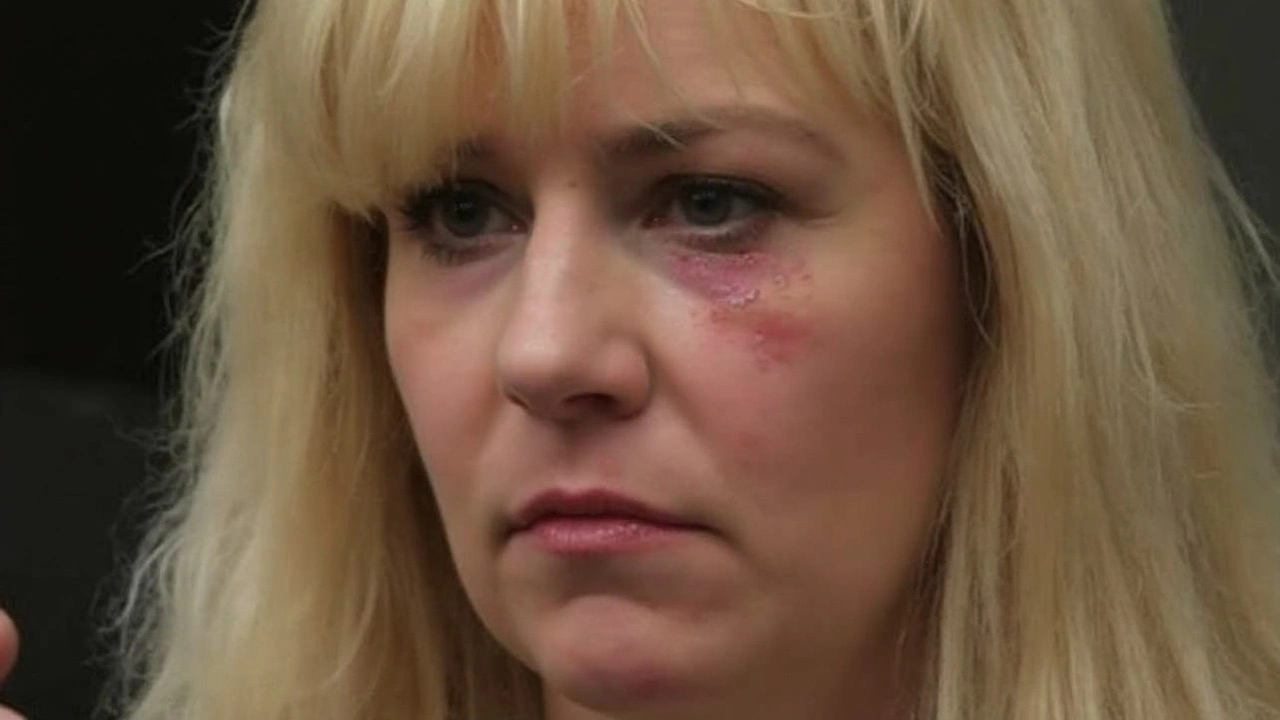The Night Lee Harvey Was Murdered
Few murder cases in Britain have combined violence and deceit like the death of Lee Harvey. On the night of December 1, 1996, Tracie Andrews and Lee, a young couple living near Alvechurch, Worcestershire, reached a breaking point after a day of bitter arguments. As they drove along Mill Lane—a quiet, secluded spot—they pulled over. What happened next tore Lee’s family apart and gripped the UK for months.
Andrews stabbed Lee 42 times with a small penknife. The attack wasn’t a momentary outburst; it was personal and frenzied. Lee suffered severe wounds, many to his face and neck. Yet Andrews didn’t flee or confess. Instead, with Lee’s body nearby, she quickly changed roles—from aggressor to alleged survivor.
The Road Rage Lie and Its Unraveling
By the next day, Tracie Andrews stood before police in her own home, rattled but defiant. She spun an elaborate tale of road rage. According to her, a Ford Sierra carrying two men had chased and forced them off the road. She described the so-called killer in absurd detail—a “fat man with staring eyes.” The media ran with her story, trading in the fear of random violence on English roads. Two days later, Andrews sobbed during a televised press conference, pleading for help to catch Lee’s “killer.” She wore heavy makeup to hide visible bruises, adding to her portrayal as the traumatized victim against a faceless evil.
But from the start, police were uneasy. The evidence refused to cooperate with Andrews’ account. Lee’s car was oddly parked; there was no sign of a chase or panic—just a carefully positioned vehicle. The injuries said everything: this wasn’t a two-second assault by a stranger, but a brutal, up-close attack that lasted many minutes. Officers remembered how Andrews shifted details mid-interview. Her emotions felt rehearsed, her distress oddly performative. One detective later recalled, not only was her story implausible—the physical clues pointed right back at her.
Even in the earliest hours, Lee’s own family harbored doubts. His sister, Mandy, immediately distrusted Andrews’ version. Those close to the couple remembered Tracie’s volatile moods and history of controlling behavior. For them, her teary TV appearance was just another act. They suspected she was using emotional theatrics as a cover-up, hoping public sympathy would make her untouchable.
Investigators soon found critical details that shattered the road rage myth. No such Ford Sierra had been spotted. Muddy footprints, phone records, and forensic traces stacked up against Andrews. The evidence painted her as the only suspect. The press began withdrawing their support, and the public, too, started to see through the lies.
By the time Andrews stood trial in July 1997, her crocodile tears had dried. Prosecutors laid bare a picture of calculated manipulation. Experts said her story was textbook false victimhood—designed to exploit sympathy and dodge responsibility. She was convicted and sentenced to life in prison, her appeal dismissed soon after.
This tragic saga hasn’t left the public imagination. The murder of Lee Harvey—and Andrews’ chilling, elaborate fabrication—remains a notorious tale about people who commit unthinkable acts yet twist narratives to shield themselves. When we remember the case, it’s not just for the violence, but for the road rage murder lie that almost fooled us all.

Write a comment